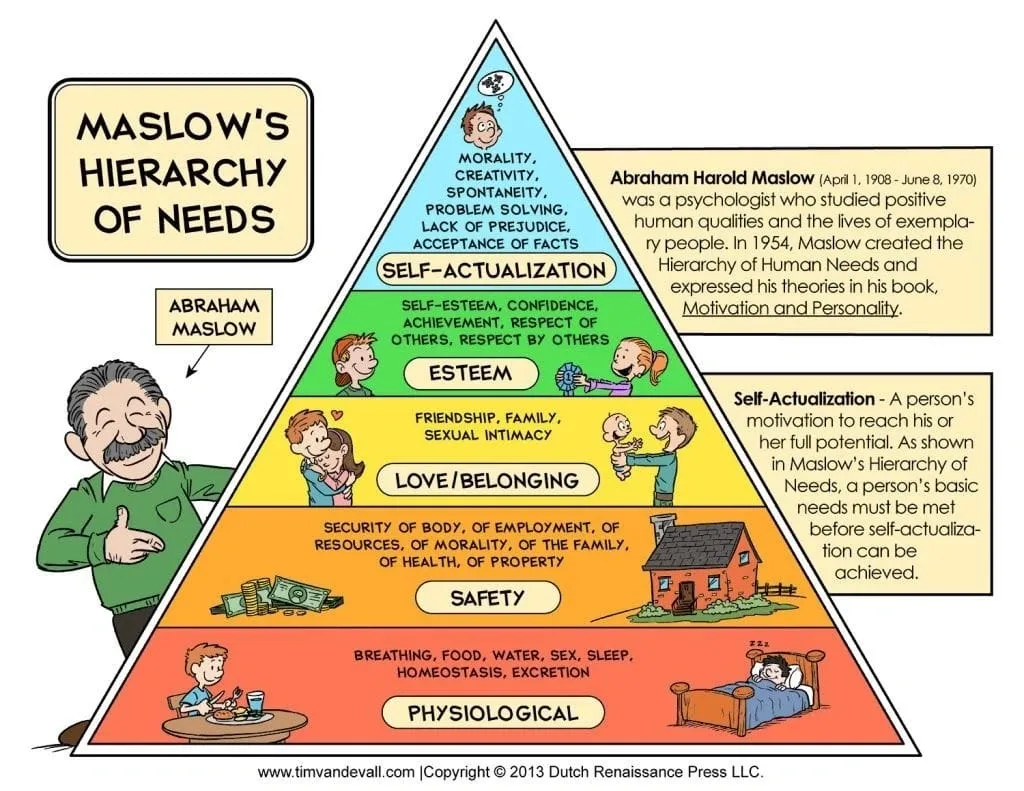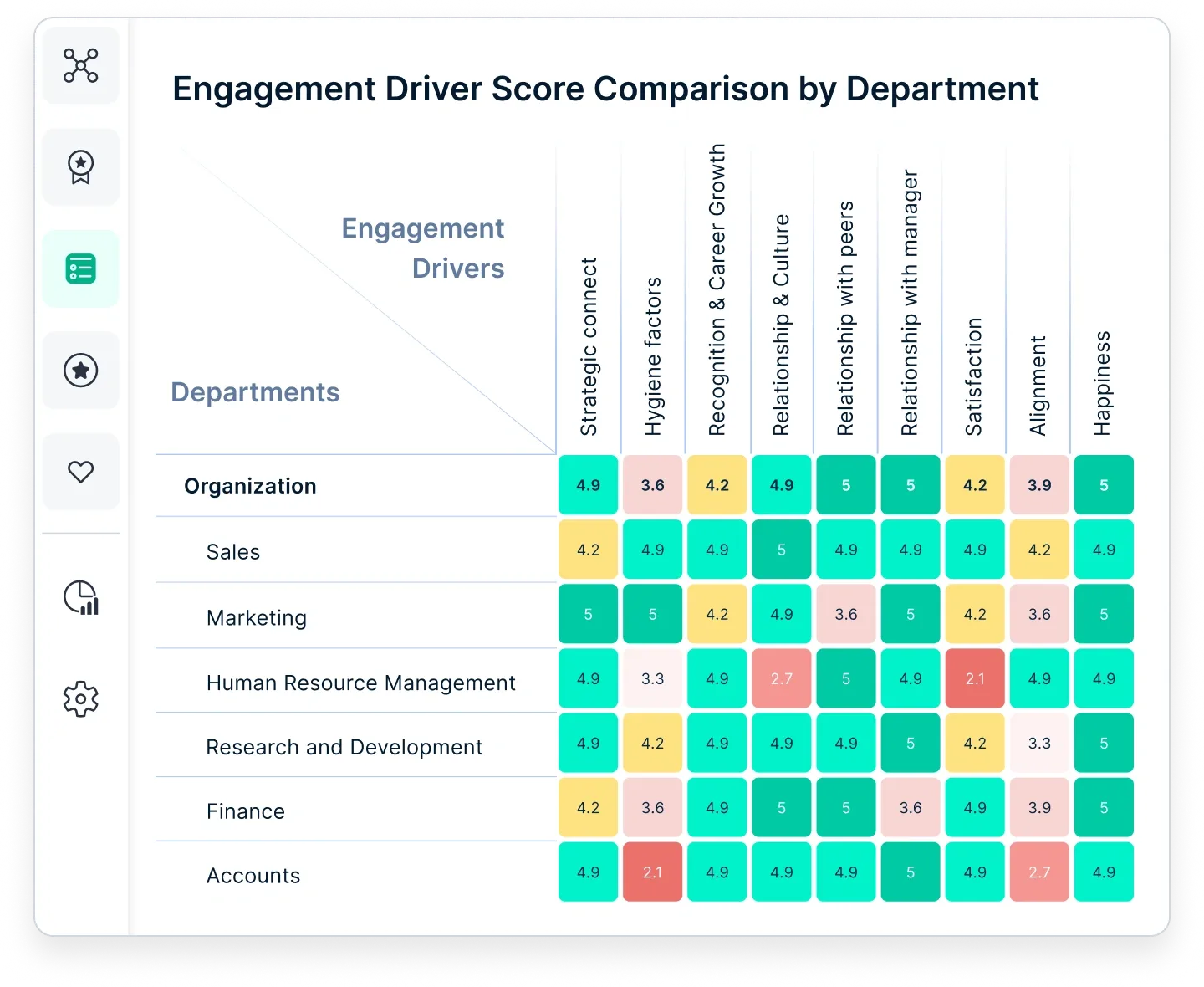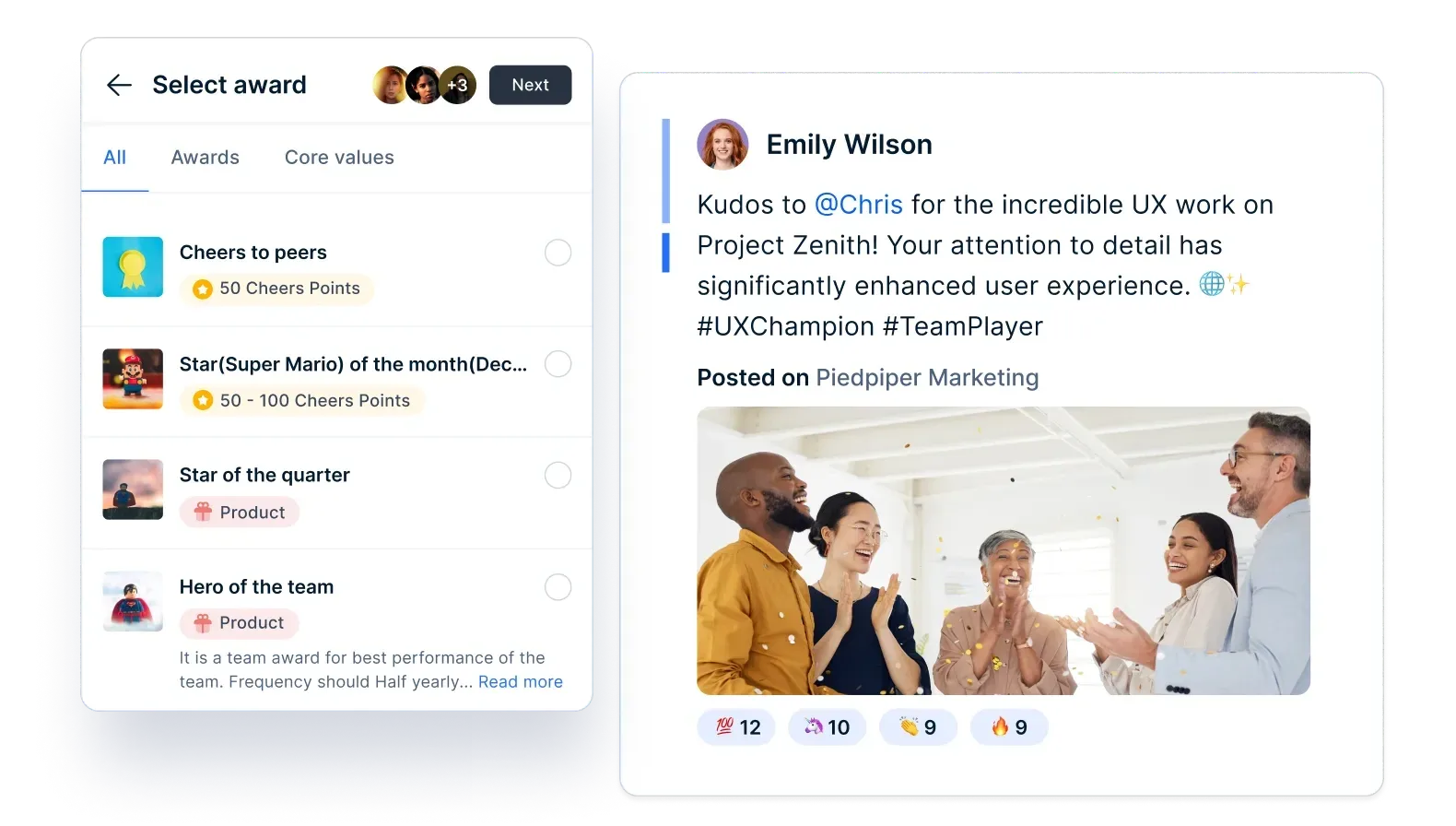11 Proven Employee Engagement Strategies to Boost Productivity in 2025
Explore 11 powerful employee engagement strategies to enhance productivity, boost morale, and retain top talent. Create a motivated workforce with these actionable insights.
Di halaman ini
- Understanding employee engagement
- Benefits of a highly engaged workforce
- Types of employee engagement techniques
- 11 Employee engagement strategies you must implement in 2025 to boost productivity
- 5 Common employee engagement mistakes to avoid
- Essential tools assess employee engagement
- Kesimpulan
- Pertanyaan Umum
As per a report a staggering $8.9 trillion (about $27,000 per person in the US) is drained from the global economy due to low employee engagement—imagine the transformative impact of unleashing this untapped potential with the correct employee engagement strategies.
Employee engagement is more than a buzzword—it's a driving force behind organizational success. Imagine a workplace where employees are not just clocking in but are genuinely invested, motivated, and passionate about their roles.
This level of engagement doesn't happen by accident; it requires intentional strategies and a deep understanding of what truly motivates your workforce. In today's competitive business landscape, where the cost of disengagement is measured in billions, ensuring that your employees feel valued and involved is not just important—it's essential.
This blog will share a few simple employee engagement strategies that every team member expects from their leader, and if you provide them, then even in today’s fast-paced, ever-changing, highly mobile, and distributed world, they will work to help create highly engaged teams.
Understanding employee engagement
Employee engagement is a critical factor in driving organizational success. It’s much bigger than just job satisfaction—it’s about creating a highly productive and driven workplace environment. Understanding the components and benefits of employee engagement is the first step in developing effective strategies that foster a highly engaged workforce.
As per an article by Forbes, employees tend to leave an organization when they feel ignored or overlooked. Keeping this in mind, let’s have a look at the various aspects of employee engagement and learn management techniques for employee engagement in contemporary organizations.
At its core, employee involvement techniques revolve around several key components: emotional commitment, job satisfaction, and a sense of purpose. Employees who are emotionally committed to their organization are more likely to put in discretionary effort, go the extra mile, and remain loyal to the company.
This sense of purpose, when aligned with the company’s mission and values, forms the foundation of a highly engaged workforce. There are three primary types of employee engagement based on employee attitudes and performance:
- Actively engaged: Employees who are passionate about their work and dedicated to the company's goals. They spread positivity and serve as brand advocates.
- Not engaged: Employees who only complete required tasks, show little interest in the company, and lack proactivity.
- Actively disengaged: Unhappy employees who underperform spread negativity, and discourage others. They are the least engaged.
Benefits of a highly engaged workforce
A highly engaged workforce is a powerful asset to any organization. Engaged employees are more productive, exhibit higher levels of innovation, and contribute to better overall business performance.
Additionally, companies with high employee engagement tend to experience lower turnover rates, increased customer satisfaction, and improved profitability. Investing in employee engagement is, therefore, an investment in the future success of your organization.
As per an article by Indeed, employee engagement tools and techniques lead to an increase in employee retention, increase in customer satisfaction, contribution to innovation, and enhanced company culture.
The research was conducted by Harvard Business Review, wherein a total of 568 individuals participated in the survey, all of whom were employed by organizations with 500 or more employees. Over 42 percent of these respondents came from companies with 10,000 or more employees.
The survey had a global reach, with companies headquartered in North America (54 percent), Asia (18 percent), Europe (16 percent), the Middle East and Africa (7 percent), and South/Central America (5 percent).
Respondents represented a diverse range of industries: 16 percent were in IT/telecommunications, 14 percent in financial services, 12 percent in manufacturing, 9 percent in energy/utilities, 8 percent in healthcare, 8 percent in education, and the remaining 33 percent were from various other sectors.
Seventy-one percent of respondents consider employee engagement to be crucial for overall organizational success. Additionally, seventy-two percent believe that recognizing high performers has a significant effect on employee engagement. However, only twenty-four percent of respondents feel that employees in their organization are highly engaged.
Employee engagement has surged to the forefront of business priorities for senior executives. In today’s fast-paced economy, leaders understand that fostering a high-performing workforce is crucial for both growth and survival.
They acknowledge that a highly engaged team can drive innovation, boost productivity, and enhance financial performance, while also cutting costs associated with hiring and retention in a competitive talent market. Despite this awareness, many executives struggle to find effective ways to measure and address engagement.
However, a growing number of leading companies are gaining a competitive edge by implementing metrics and practices that quantify and enhance the impact of their engagement strategies on overall business outcomes.
The research reveals a disconnect between executive optimism and middle management’s perception of employee engagement. While top executives are generally more positive about engagement levels, three-quarters of those surveyed reported that most employees are not highly engaged, pointing to a significant gap in understanding between executive and middle management perspectives.
Moreover, many companies face challenges in measuring engagement and linking it to financial performance, with fewer than 50 percent effectively correlating employee engagement with metrics such as customer satisfaction or market share.
Yet, a group of companies identified as “high prioritizers” have successfully employed metrics and shared best practices to connect engagement efforts with business performance.
Types of employee engagement techniques
To foster engagement, organizations must implement a variety of techniques tailored to their unique culture and employee needs. Here are some proven strategies:
1. Regular feedback and recognition: Employees need to know how they’re doing and that their efforts are recognized. Regular feedback—both positive and constructive—helps employees improve and stay aligned with organizational goals. Recognition programs, whether formal or informal, show appreciation for employees’ hard work and achievements, boosting morale and motivation.
2. Professional development opportunities: Providing opportunities for learning and growth is key to keeping employees engaged. When employees see a clear path for career advancement, they are more likely to stay motivated and committed. Offering training programs, mentorship, and career development resources can help employees build new skills and advance within the organization.
3. Work-life balance initiatives: Maintaining a healthy work-life balance is essential for employee well-being and engagement. Organizations can support this by offering flexible work arrangements, promoting the use of paid time off, and providing wellness programs. When employees feel their personal and professional lives are in harmony, they are more likely to remain engaged and productive.
4. Employee involvement in decision-making: Giving employees a voice in decision-making processes empowers them and fosters a sense of ownership and responsibility. Involving employees in discussions about company policies, projects, and goals not only leads to better outcomes but also strengthens their commitment to the organization.
11 Employee engagement strategies you must implement in 2025 to boost productivity
These strategies aren’t just ideas on paper—they’re practical ways to create a workplace where people feel connected, valued, and inspired to do their best work. Use these employee engagement strategies to retain your top performers and make them more productive.
1. Clear Direction: Catalyst to a successful employee engagement strategy
The first thing we need to do is to give people a clear direction. If you do not know what the goal and objects of the tasks are, then people can't be able to connect with them. When people lack clarity and direction, it’s difficult for them to become engaged, if not impossible. We should also look to clarify not only what we are doing but also why it is important and if we can explain why, it is important to them, then that’s even better.
As part of the program we were running at Fujitsu, we were moving a client to a new IT platform, so we looked to highlight to the team that they would be the first in the company to gain skills within this new technology which would help give them a competitive advantage and put them in demand for future projects.
2. Creating a safe environment
Nothing kills an effective employee engagement strategy faster than having a blame culture. I see this time and time again where people are criticized for mistakes, and demeaned in front of others for any tiny mishap.
This is a morale killer, it not only stops people from taking risks, but they also look to keep out of the firing line and do the minimum that is required of them, and if it gets too toxic, then they become disengaged completely.
Good leaders create a safe environment where people don’t feel afraid of making mistakes because that fear can lead to hesitation and mistakes. If mistakes happen, then focus on finding solutions, not who’s to blame, and give any feedback in a supportive way that will help people improve rather than highlighting their shortcomings, and also do it in private. Public autopsies of individual failure only make people warier of mistakes.
3. Set them up for success
Ever heard the phrase, “Success has a thousand fathers, but failure is an orphan child” this is one of my favorite sayings because it shows that everyone wants to be part of a winning team.
We all want to feel that we have achieved something, to experience success, and to get rewards and recognition. We are hard-wired for this, one of our basic needs is to have good self-esteem and a little bit of success serves to fill that need.
So, if we can show our teams how to be successful, if we give them the tools, they need to be successful, then not only will they become engaged, but they will become excited to be involved.
Orang tidak takut dengan kerja keras - mereka takut gagal, dan ketika kita sebagai pemimpin dapat memberi mereka kepercayaan diri bahwa mereka akan berhasil, maka menurut pengalaman saya, mereka akan bekerja keras untuk mencapainya.
4. Give them space to be successful
Whilst I believe that blame is one of the worst things for killing engagement, I must admit that Micro-Management is a very close second. Even with distributed teams, I have seen people become disengaged by managers constantly chasing them up through chats, emails, and phone calls.
It sometimes feels that Micro Managers see virtual teams and people 1000 miles away from them as some challenge and look for new and better ways to keep a close eye on them. Even though we might be working at home, it feels like Big Brother is still watching you.
Jangan lakukan itu!
Berikan tim Anda ruang; beri mereka kesempatan untuk membuat kemajuan sebelum Anda mengeceknya. Idealnya, sepakati dengan mereka kapan waktu yang tepat bagi Anda untuk kembali dan melihat perkembangan mereka.
Ketika Anda memberikan ruang kepada orang lain, hal ini menunjukkan bahwa Anda mempercayai mereka; mereka akan merasa dihargai dan itu adalah dua perasaan yang akan membantu mendorong keterlibatan.
Bukan berarti kita tidak boleh melakukan pengecekan; ini berarti kita harus melakukannya pada waktu yang tepat dan, idealnya, pada waktu yang telah disepakati bersama. Hal ini tidak hanya akan membantu meningkatkan keterlibatan, tetapi juga akan membantu mendorong akuntabilitas.
5. Give them support when needed
Dalam hal membuat orang merasa bahwa mereka akan berhasil, salah satu alat yang paling ampuh adalah memberi tahu mereka bahwa mereka mendapat dukungan kami dan dapat menghubungi kami jika diperlukan. Ini seperti memberikan jaring pengaman kepada seorang seniman trapeze, mungkin mereka tidak akan menggunakannya, namun dengan mengetahui bahwa jaring pengaman itu ada akan membantu meningkatkan kepercayaan diri mereka, yang akan membantu meningkatkan keterlibatan lebih jauh lagi.
89% of workers at companies that support well-being initiatives are more likely to recommend their company as a good place to work-American Psychological Association
We should let them know at the start that they can reach out if there are any difficulties or things they are unsure of or need a little help with. This also contributes to creating a safe environment, one where they know that if they start to have issues, not only will they not be blamed or criticized but one where they can get some help.
6. Give them good feedback
Dengan tim yang tersebar luas, kita perlu memastikan saluran komunikasi yang jelas, terbuka, dan digunakan secara teratur. Kita perlu mengatur panggilan telepon secara teratur untuk berbagi kemajuan dengan tim ketika mereka dapat melihat bahwa mereka berhasil, hal ini akan menjadi motivasi yang besar dan menunjukkan bahwa upaya mereka berhasil. Hal ini juga memberikan kesempatan untuk memberikan dukungan ketika kita perlu melakukan perubahan jika ada hal-hal yang tidak berjalan dengan baik.
Employees feel 5x more empowered if their feedback is valued in the organization. - Salesforce
Kita juga perlu memuji karyawan atas usaha dan kemajuan yang baik. Jika orang bekerja keras namun hanya menerima sedikit atau bahkan tidak ada umpan balik, mereka dapat dengan cepat jatuh ke dalam pola pikir "Saya tidak tahu mengapa saya harus repot-repot", dan saat itu terjadi, mereka mulai menuju ke arah pelepasan diri.
Umpan balik positif tidak memerlukan biaya, tetapi laba atas investasi sangat signifikan, berikanlah dengan bebas.
Seiring dengan perubahan dunia yang semakin cepat, hal-hal sederhana ini akan membantu Anda menciptakan tim yang terlibat. Mereka akan bekerja dengan tim yang melapor langsung kepada Anda; mereka juga akan bekerja dengan pemasok dan staf eksternal, karena mereka membantu memenuhi beberapa kebutuhan dasar kita. Semakin baik Anda melakukan hal ini, semakin terlibat tim Anda dan semakin baik pula hasil yang akan Anda capai.
7. Tour of duty
Perusahaan dari berbagai ukuran - besar atau kecil - sering kali memiliki pendekatan reaktif dalam hal retensi dan keterlibatan karyawan. Mereka merekrut keterampilan baru dan memecat karyawan untuk menghemat biaya.
Pendekatan ini tampak sah, memenuhi kebutuhan bisnis dalam jangka pendek, namun menjadi kontra produktif dalam jangka panjang. Karyawan mengambil petunjuk dari pengaturan seperti itu. Mereka berperilaku seperti agen bebas dan berpindah-pindah pekerjaan setiap kali ada kesempatan baru.
Reid Hoffman, founder of LinkedIn proposes an adaptive approach in one of his books The Alliance: Managing Talent in the Networked Age. The approach is called ‘the tour of duty’.
The concept comes from the military where officers work on a single assignment or deployment and then move on to the next, defining their entire military career. This helps them grow their skills and experience and avoid reaching an unexpected plateau in their careers. They get to know the entire organization rather than feeling stuck in a single role for years. The organization also gets to develop the talent from an internal pool of employees and solve their succession problems.
Dalam pendekatan 'tour of duty', perusahaan dan karyawan menyepakati hasil dan ekspektasi satu sama lain, serta waktu pelaksanaan tur. Pada akhir satu tur, karyawan dapat memilih untuk melakukan tur tugas lainnya di dalam perusahaan, alih-alih memilih tur dengan pesaing.
Bukankah mendorong karyawan untuk mencari tugas baru merupakan hal yang berlawanan dengan intuisi? Dunia start-up telah menunjukkan bahwa mendorong karyawan untuk berwirausaha benar-benar membuat karyawan tetap terlibat secara mendalam.
Apakah mereka akan pergi jika perusahaan tidak memberikan tur tugas lagi? Ya! Tetapi mempertahankan karyawan tersebut bahkan untuk waktu yang relatif lebih singkat dapat memberikan manfaat besar bagi perusahaan dan tentu saja, ini adalah strategi keterlibatan karyawan yang unik.
Apa perbedaan 'tour of duty' dengan yang biasa - "mempekerjakan, memeriksa kinerja, melanjutkan atau melepaskan"? Dalam kasus 'tour of duty', sangat jelas bahwa perjanjian tersebut akan berakhir. Janji kepada karyawan bukan hanya gaji, tetapi juga peningkatan kemampuan kerja.
The duration is pre-decided, and it is usually kept at two years. There is no fuzzy expectation of “being a good employee” and no fuzzy commitment to the employee. Time-limited mutual commitment with clear goals and expectations is the hallmark of ‘tour of duty’. This may seem transactional but is better than buying time for money and driving employee retention via vague notions of loyalty.
8. Alumni networks and employee peer networks
Some of the leading technology companies such as Intuit actively run alumni networks. The benefit is obvious - tap into the network intelligence. At one end, such initiatives enable HR to tap back into the past talent for a rehire or get recommendations on new hires. However, more importantly, companies stand to benefit from the knowledge and information with people outside the company.
Kearifan tradisional mungkin mendikte untuk menghindari karyawan lama, menandatangani kontrak yang ketat, memperlakukan karyawan yang ada sebagai karyawan tetap. Namun, sekali lagi, pelajaran dari perusahaan rintisan dan beberapa organisasi yang berpandangan ke depan telah menunjukkan sesuatu yang baru. Jauh lebih bermanfaat untuk melibatkan karyawan, alumni, dan jaringan karyawan Anda daripada menghindarinya tanpa mempertahankan kekhawatiran yang tidak semestinya.
Bangun dan aktifkan jaringan karyawan Anda. Ajarkan mereka cara mencari dan menjangkau jaringan tersebut. Beritahukan kepada karyawan Anda tentang informasi non-publik vs informasi hak milik. Informasi yang terakhir ini bersifat rahasia dan tidak boleh keluar dari perusahaan.
Di sisi lain, informasi non-publik adalah apa yang dapat mereka tukar dan cari, seperti tren terbaru yang mereka amati di industri, perubahan teknologi, dll. Dorong mereka untuk membiayai makan bersama dengan pihak luar dan sebagai gantinya berbagi pembelajaran mereka di dalam perusahaan.
Buat jaringan alumni di LinkedIn, selenggarakan acara-acara besar di tempat perusahaan, undang pemberi pengaruh untuk berbicara, tawarkan tiket gratis kepada alumni Anda dan tamu mereka. Manfaatkan setiap kesempatan untuk membangun hubungan.
Jika Anda tidak memiliki sumber daya yang cukup untuk melaksanakan program yang rumit seperti itu, cukup dengan berkeliling, tanyakan informasi baru yang ditemukan oleh tim akhir-akhir ini. Dan sebagai imbalannya, cukup tawarkan apresiasi yang tulus untuk berbagi informasi ini yang mungkin telah mereka kumpulkan dari alumni atau jaringan mereka sendiri. Pada akhirnya, karyawan akan mulai mengenali jaringan dan secara aktif mengelolanya.
9. Employee well-being support mechanisms
Suka atau tidak suka, mau diakui atau tidak, karyawan Anda datang ke tempat kerja ketika mereka sedang menghadapi tantangan dalam kehidupan pribadi mereka. Hubungan yang rusak, masalah kesehatan yang berat, anggota keluarga yang sakit parah; daftarnya tak ada habisnya jika menyangkut keseimbangan antara pekerjaan dan kehidupan pribadi.
Kebijaksanaan umum akan memandu Anda untuk mengharapkan karyawan datang tanpa terpengaruh ke tempat kerja dan memberikan 100% dari tujuan mereka dan bersinar. Namun, sebagai pemimpin HR, Anda tahu bahwa inisiatif dan program keterlibatan Anda mungkin tidak memberikan hasil yang diinginkan karena Anda tidak terhubung dengan karyawan secara mendalam.

Source: Dan Martell
Patty Azzarello, mantan pemimpin perusahaan dan sekarang menjadi konsultan dan pelatih bisnis, menyebutkan bahwa ia mampu meningkatkan keterlibatan dan kinerja anggota timnya dengan pertanyaan sederhana "apa yang Anda ingin saya khawatirkan tentang Anda?".
Dengan pertanyaan sederhana ini, ia menciptakan lingkungan yang terpercaya bagi orang-orang untuk terbuka dan berbagi kerentanan mereka dalam kehidupan pribadi dan hubungan emosional yang mempengaruhi kinerja mereka. Ia kemudian melanjutkan dengan memfasilitasi transisi karyawan untuk keluar dari tantangannya dengan menawarkan dukungan.
Bagaimana Anda sebagai pemimpin SDM mewujudkan strategi tersebut dalam organisasi Anda dan melembagakannya? Pertimbangkan untuk melibatkan para ahli - baik itu pelatih kehidupan, instruktur terlatih dari organisasi spiritual yang diakui secara global, pengacara, dokter, dan lain-lain yang memberikan keterampilan hidup dan nasihat ahli secara teratur.
Program formal seperti ini yang dilakukan secara terus-menerus memberikan kesempatan kepada karyawan untuk mendalami dan memanfaatkan fasilitas tersebut. Jangan hanya menyelenggarakan pemeriksaan gigi. Lakukan lebih dari itu dan berinvestasilah pada karyawan Anda dengan cara yang terstruktur dan lebih mendalam. Tentu, akan ada biaya yang harus dikeluarkan.
Namun, pikirkanlah biaya gesekan dan biaya pelepasan yang sangat besar. Program-program semacam itu menawarkan kesempatan kepada SDM untuk meningkatkan pengalaman karyawan, produktivitas, keterlibatan dalam pekerjaan, dan metrik terkait lainnya yang secara langsung berdampak pada profitabilitas perusahaan.
10. Businesses know-how
Orang pada umumnya terjebak dalam dunia kecil mereka - teman yang terbatas, masalah kehidupan yang terbatas, dan pekerjaan. Dengan pandangan ini, bahkan masalah kecil pun dianggap sebagai gangguan besar. Namun, ketika kita benar-benar menyadari betapa kecilnya keberadaan kita di planet dan galaksi ini, kita akan mendapatkan perspektif yang lebih besar dan lebih baru tentang kehidupan kita. Demikian pula halnya dengan situasi di tempat kerja modern.
Kemungkinan besar, karyawan di organisasi Anda sibuk dengan pekerjaan inti mereka - hari demi hari, tanpa mengetahui apa yang terjadi di tim, divisi, atau wilayah lain. Seorang anggota tim teknis mungkin tidak tertarik dengan cara pemasaran mempromosikan produk perangkat lunak perusahaan. Dan seorang staf penjualan mungkin tidak tertarik dengan bagaimana logistik menghadapi tantangan seputar inventaris dan pencurian.
Mungkin yang mereka ketahui hanyalah melalui buletin dari CEO. Dan lingkungan kerja yang terkotak-kotak membuat dunia mereka terlalu kecil di dalam perusahaan. Visi yang terbatas tentang pekerjaan mereka dan operasional perusahaan membuat mereka lebih mudah tersesat dan pelepasan diri dapat terjadi kapan saja. Karyawan terjebak dengan ketidaknyamanan yang sangat kecil dan mungkin berakhir dengan meninggalkan pekerjaan atau berkinerja buruk.
There is a way out of this. Make them see the larger picture. Make them see where their job fits into the money-making for the company. Help them understand how the company fits into the overall industry and how perhaps the industry is fairing with the overall economy.
Encourage them to teach and share business know-how. Formalize routine programs where such know-how exchange happens. Document and socialize these learnings. Start with understanding the nuances of your company.
As the business book author Josh Kafuman outlines, to understand any business, know the five core parts of any business - value creation, marketing, sales, value delivery, and finance.
Penciptaan nilai adalah tentang menciptakan produk atau layanan untuk ditawarkan kepada pelanggan, pemasaran adalah tentang membangkitkan minat pelanggan, penjualan adalah tentang mendaftar pelanggan dan menerima uang, dan akhirnya pengiriman nilai adalah tentang benar-benar memberikan produk dan layanan yang telah dibayar oleh pelanggan.
Terapkan model yang sama untuk memahami bisnis yang serupa dengan bisnis Anda. Model dasar tersebut akan membantu SDM untuk memahami bisnis itu sendiri dan mendapatkan dukungan dari para pemimpin dan manajer untuk meningkatkan pengetahuan bisnis semua karyawan, sehingga menciptakan makna di sekitar pekerjaan mereka.
11. Inter-team collaboration
Tidak hanya di perusahaan besar, tetapi bahkan di perusahaan dengan 150+ karyawan, tim lebih sering berkompetisi daripada berkolaborasi satu sama lain. Ini adalah salah satu masalah utama yang dihadapi para pemimpin bisnis dan sangat penting dalam meningkatkan pengalaman karyawan.
Pemimpin SDM dapat memainkan peran kunci dalam membantu para pemimpin bisnis mencapai kolaborasi yang dibutuhkan di antara tim dan unit bisnis dan meningkatkan produktivitas seluruh organisasi. Tim mengajukan penawaran untuk proyek yang sama dan bersaing untuk mendapatkan bagian utama.
Mereka mencoba merekrut dan membangun keterampilan untuk diri mereka sendiri alih-alih meminjam dari tim lain. Pada akhirnya, keahlian di seluruh organisasi menjadi tidak seimbang, dan para pemimpin bisnis mendapati diri mereka berada dalam kesulitan untuk mendewasakan organisasi dengan keahlian yang lebih relevan untuk mewujudkan peluang bisnis baru. Siapa yang kemudian diminta untuk memecahkan teka-teki keterampilan ini? Anda, pemimpin SDM!
Skenario kurangnya kolaborasi dan persaingan antar divisi terjadi karena tim tidak memahami peran yang dimainkan untuk menciptakan nilai dan memberikan nilai. Mereka mungkin memahami pada tingkat informasi, namun mereka mungkin belum menginternalisasi tantangan dan keunikan tim lain. Ambil kesempatan ini dan buatlah mereka saling memahami satu sama lain atau masuk ke dalam posisi satu sama lain.
5 Common employee engagement mistakes to avoid
Many managers unknowingly adopt strategies that harm employee engagement. Here are some common mistakes that reduce workplace morale and productivity.
1. Setting unrealistic expectations and threatening job security
Managers often set unattainable goals and use threats like job termination or pay cuts to enforce them. A CBC report highlighted how TD Bank employees faced immense pressure to meet unrealistic sales targets, leading to unethical upselling. While managers may believe this boosts productivity, it increases stress, lowers engagement, and contributes to high turnover.
2. Bermain favorit
Favoritism is widespread in workplaces, where managers grant special privileges based on personal relationships. A study of U.S. business executives found 56% favored certain employees for promotions, while 30% of HR professionals acknowledged favoritism in their organizations. This practice lowers morale, engagement, and job satisfaction while increasing turnover and workplace conflict. Effective leadership requires fairness and transparency to maintain a motivated workforce.
3. Mengelola karyawan secara mikro
Some managers excessively control their employees' work, undermining trust and creativity. Micromanagement leads to disengagement, as employees feel undervalued and restricted.
4. Gagal mengenali karyawan
Many managers overlook employee recognition, often citing time constraints or skepticism about its necessity. However, a SHRM study found that 84% of employees believe recognition positively impacts engagement. A culture of recognition boosts morale, productivity, and job satisfaction.
5. Menawarkan insentif yang tidak berarti
While incentives are essential, they must be meaningful. Vague or unclear bonus structures leave employees feeling undervalued.
The Business Journals suggest structured performance-based incentives that are "clear, measurable, and realistic." Employers should offer a mix of financial and non-financial rewards tailored to employee preferences.
Instead, employers should offer more meaningful incentives to employees by providing a wide range of incentives. Meaningful incentives can help to boost morale, improve productivity, and motivate employees to continue performing well. Employers need to give employees a choice to select their preferred motivations.
For example, on Empuls global catalog of incentives, employees can choose from several options to find what motivates them.
Essential tools assess employee engagement
To effectively assess and enhance employee engagement, organizations can utilize various tools such as surveys, social intranet platforms, and feedback mechanisms.
1. Pulse surveys and feedback platforms: Regularly gathering employee feedback through pulse surveys and other platforms allows organizations to stay attuned to employee sentiments and needs. These tools can provide valuable insights into areas where engagement is strong and where it may be lacking, enabling timely interventions and improvements.
How can Empuls help?
With Empuls, you can understand employee satisfaction levels and uncover the reasons behind the scores. Dive deeper to get insights into attrition, assess motivation, uncover team performance, gauge happiness, and measure workflow efficiency.

Leverage real-time sentiment analysis and benchmarked heat maps to understand the areas of improvement and develop a plan of action.
2. Employee recognition software: Implementing employee recognition software can streamline the process of acknowledging and rewarding employees’ contributions. These platforms often include features like peer-to-peer recognition, points-based rewards systems, and automated recognition for milestones, making it easier for organizations to celebrate success consistently.
How can Empuls help?
With Empuls, you can recognize your colleagues with multiple award types. There’s value badges, spot awards, and peer awards for in-the-moment recognition.

Use Approval-based awards to seek nominations and include jury panels. Share performance and incentive-based awards for various types of goals.
3. Internal communication tools: Effective internal communication tools, such as intranets, chat platforms, and project management software, help keep employees connected and informed. By facilitating seamless communication across teams and departments, these tools contribute to a more collaborative and engaged workforce.
How can Empuls help?
Align everyone with your culture with Empuls. Keep everyone on the same page by sharing company news. Build trust with two-way, transparent communication. Communicate how everyone can contribute to your culture and vision.
Celebrate every achievement, big and small, as a team. Engage with interactive content formats: gifs, polls, videos etc.
4. Learning management systems: Learning management systems (LMS) offer employees access to a wide range of training and development resources. An LMS can be used to deliver online courses, track learning progress, and provide certifications, helping employees continuously develop their skills and knowledge.
Kesimpulan
Employee engagement is essential for organizational success. By implementing techniques like clear communication, regular feedback, professional development, and work-life balance initiatives, organizations can create a highly engaged workforce.
It’s important to remember that there is no one-size-fits-all approach to employee engagement. Organizations must adapt these techniques to their unique culture, goals, and employee needs to achieve the best results.
To build a more engaged and motivated workforce, start by implementing these proven employee engagement techniques. If you’re ready to take the next step, get in touch with culture experts to help you develop a tailored engagement strategy that drives success.
For personalized support in developing your employee engagement strategy, get in touch with the culture experts at Empuls.
Pertanyaan Umum
1. What are the 5 C's of employee engagement?
The 5 C's of employee engagement are:
- Clarity – Ensuring employees understand their roles and company goals.
- Confidence – Empowering employees with the right tools and training.
- Convey – Encouraging open communication and feedback.
- Connect – Fostering strong relationships and teamwork.
- Congratulate – Recognizing and rewarding achievements.
Implementing these 5 C’s is a key employee engagement strategy to improve productivity and workplace morale.
2. What are the 4 types of employee engagement?
The 4 types of employee engagement are:
- Highly Engaged – Passionate and committed employees.
- Moderately Engaged – Satisfied but not fully invested.
- Barely Engaged – Minimal effort and motivation.
- Disengaged – Unmotivated and likely to leave.
Adopting effective strategies for employee engagement can help move employees toward higher engagement levels.
3. What are the 4 P’s of employee engagement?
The 4 P’s of employee engagement are:
- People – Building strong teams and relationships.
- Purpose – Aligning employees with company mission and values.
- Progress – Providing growth opportunities and career development.
- Praise – Recognizing and rewarding contributions.
These elements form the foundation of strategies employee engagement, ensuring a motivated and committed workforce.













